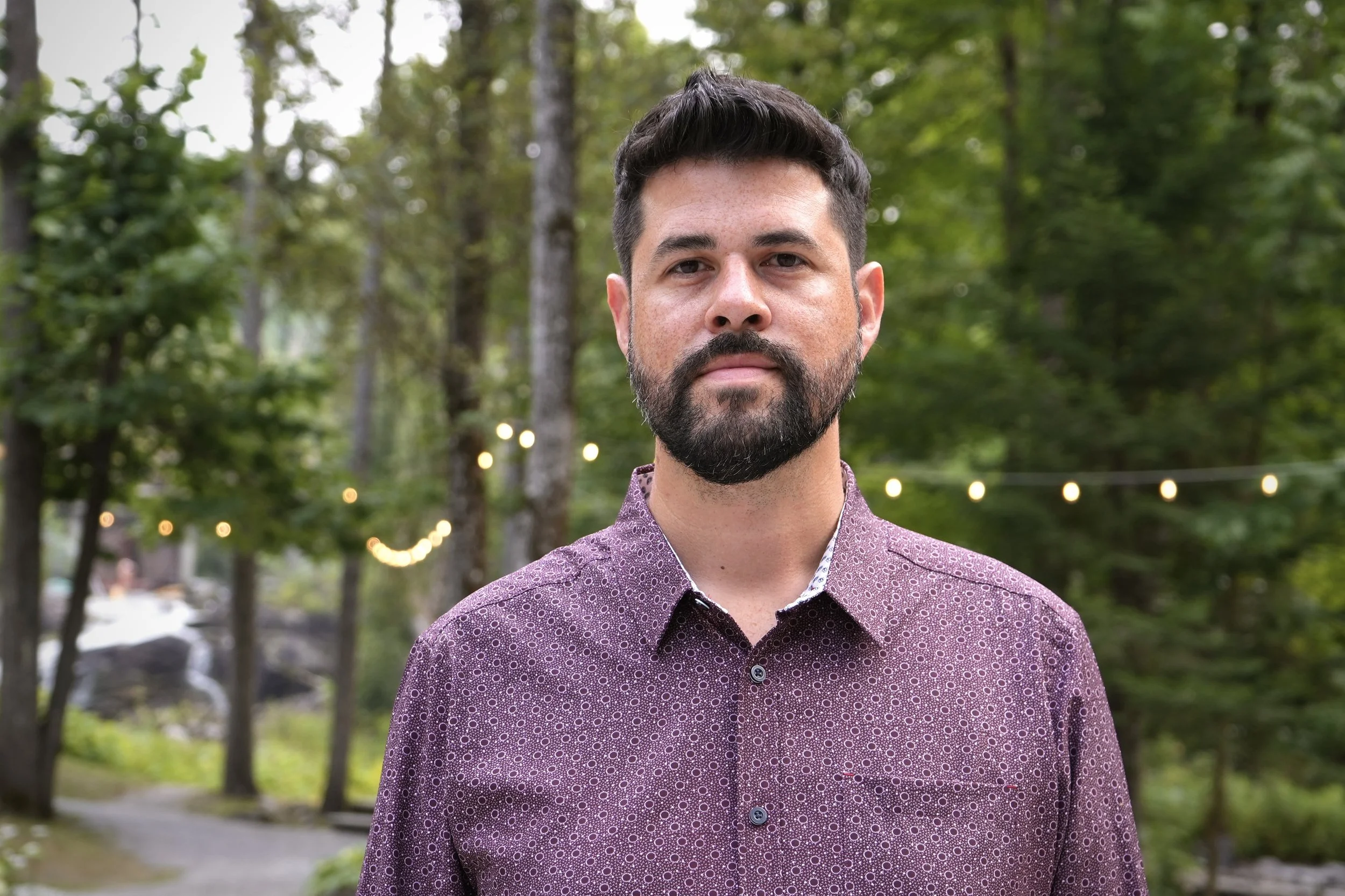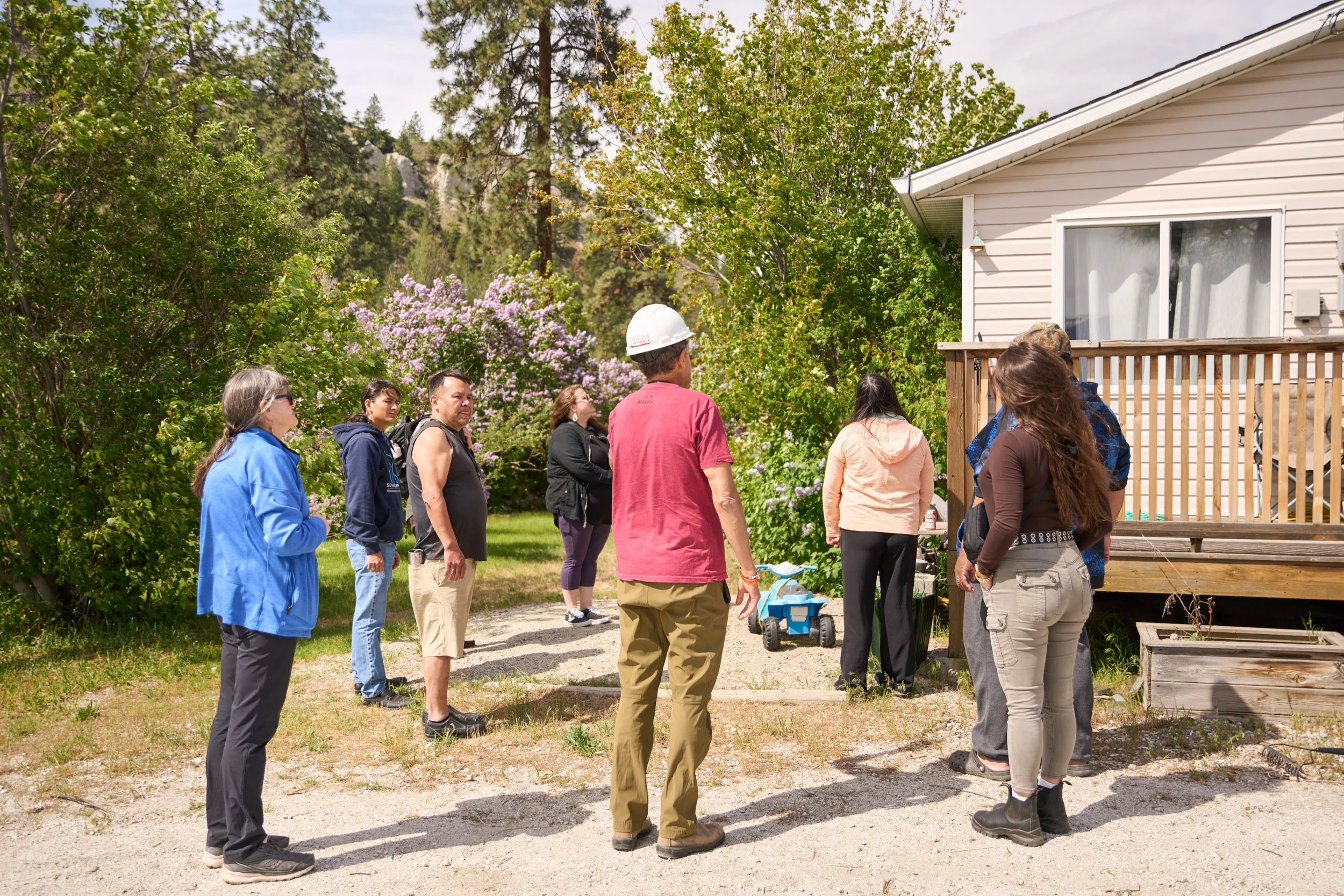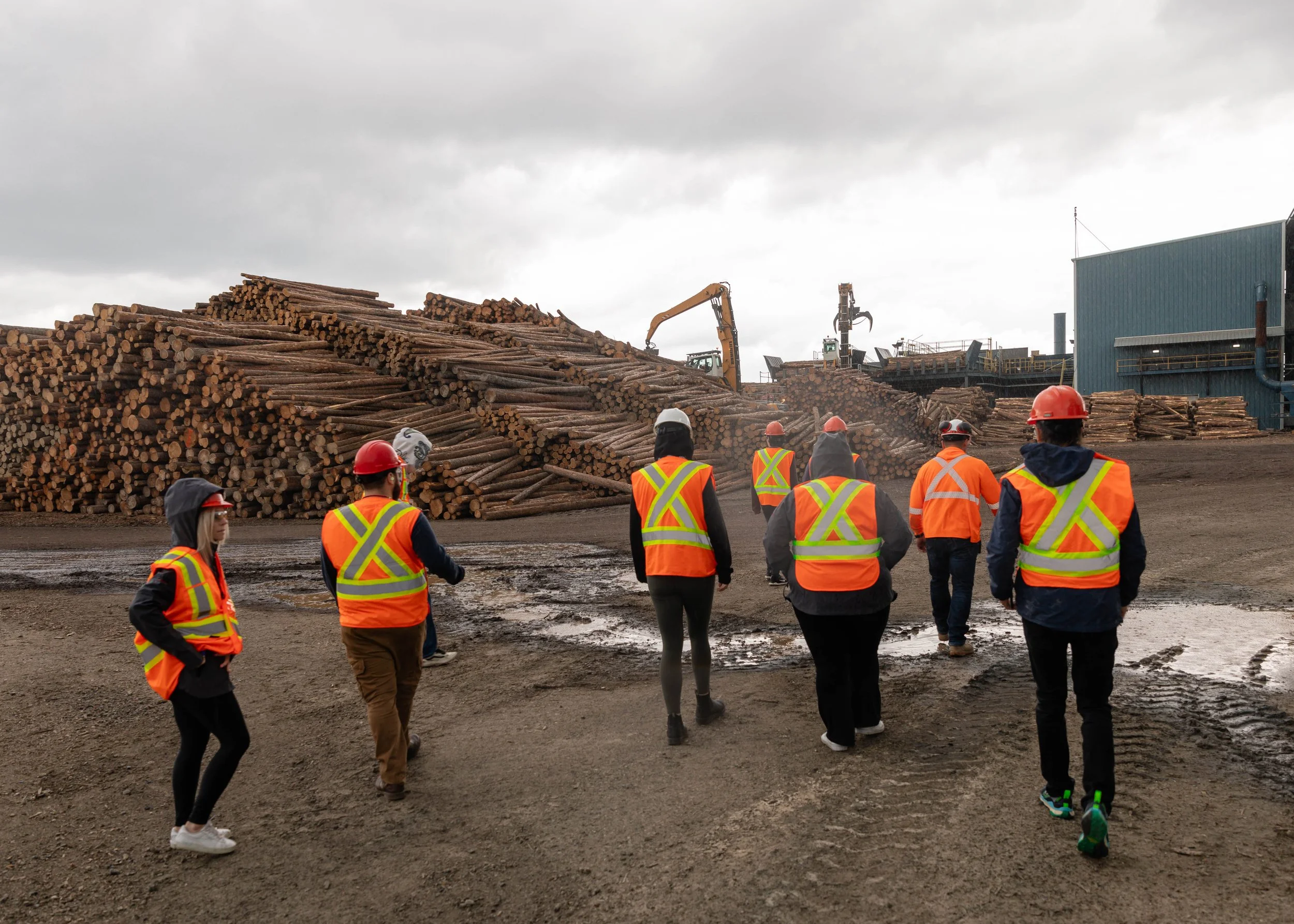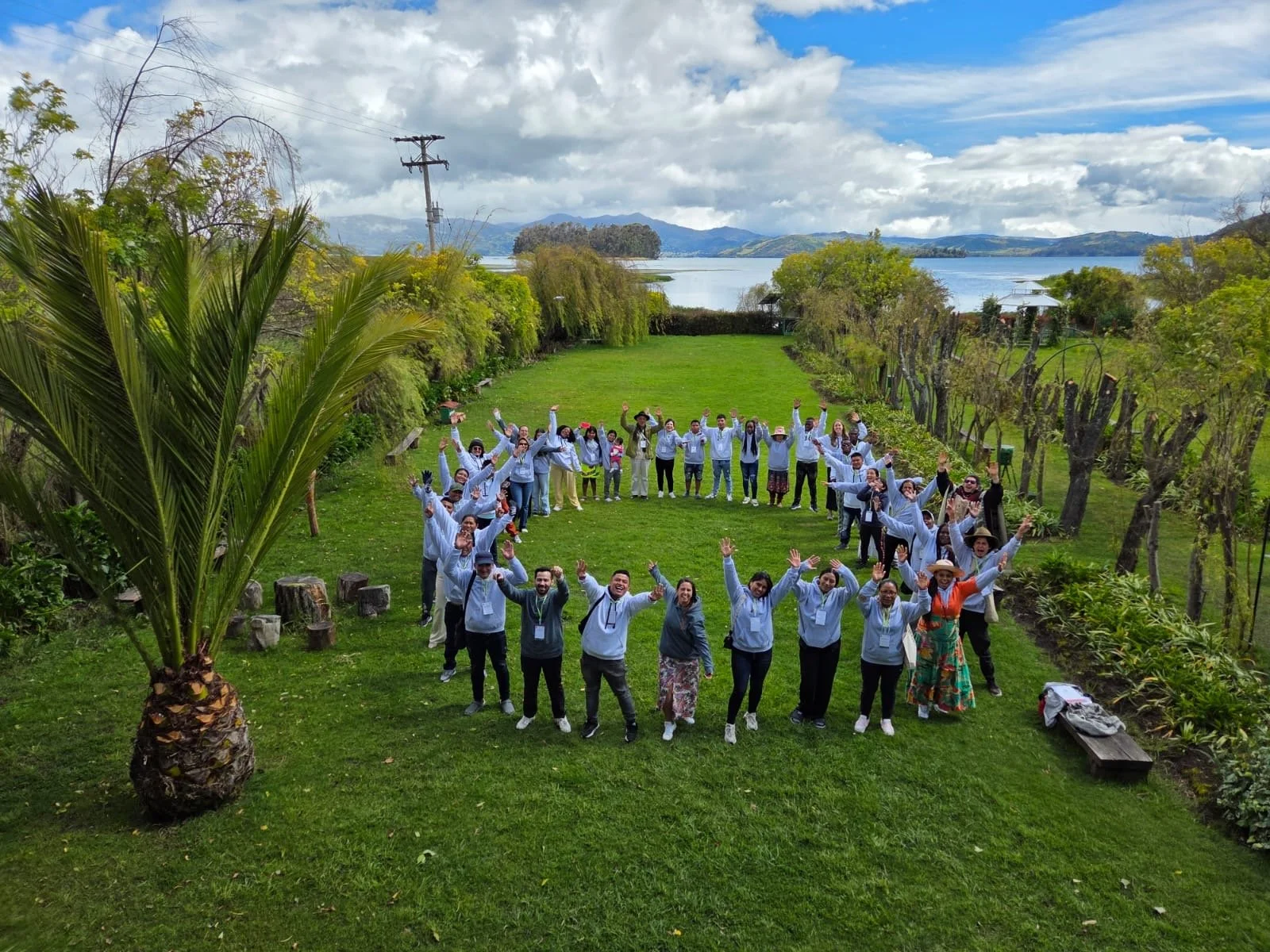James Jenkins
… is building national policy and local capacity for Indigenous clean energy growth.
“We're the only national organization that's primarily focused on advocating and supporting clean energy solutions for Indigenous communities in Canada” says James F. Jenkins, Executive Director of Indigenous Clean Energy (ICE). ICE’s flagship program is 20/20 Catalysts, a six-month intensive geared towards building leadership within Indigenous communities and businesses to lead local clean energy generation programs. The program has been around for almost a decade, and graduates have led the expansion of clean energy infrastructure in hundreds of communities in every region of Canada. ICE also has successful youth education, mentorship and work placement programs in place to bring more Indigenous youth into the clean energy sector.
The growth and success of ICE’s key programs have allowed them to think big about policy and other barriers to the expansion of the sector. For example, the planning process for clean energy projects inevitably includes holistic assessments of a community’s energy use and building efficiency; ICE realized early on that improving these is “usually a better investment than new clean energy builds. You're going to have more impact with less resources” says Jenkins. To respond, ICE started a new program, Bringing It Home, to build local capacity around energy efficiency in new and retrofitted homes and buildings, with an additional focus on the health and social benefits of these investments.
According to Jenkins, one barrier to the growth of the Indigenous clean energy sector nationally is the need for easier certifications and a stronger community of practice among post-installation maintenance and repair talent, especially in rural and remote communities. As the number of clean energy projects grows, “there have been learnings, but making sure that other communities have access to those learnings and aren't running into the same challenges has been, I think, a general roadblock.” Another key challenge is moving governments and local utilities to offer the same policy flexibility and energy subsidies to clean electricity projects that they do to fossil fuels: “every utility seems to present this challenge, particularly to off-grid communities.” These are both developing areas of work for ICE.
ICE also has an international program, after realizing that Indigenous energy “co-ownership in Canada is at a more advanced level than any other region in the world.” They have been supporting partner organizations in Ecuador, Colombia, Australia, and New Zealand, including hosting a global delegation at ICE’s annual gathering last year. The “global hub” is an area of ICE’s work that has growth potential, and could benefit from foundation funding as the organization continues to grow, lead and learn
“We're the only national organization that's primarily focused on advocating and supporting clean energy solutions for Indigenous communities in Canada.”
Policy failures can leave communities paying the utility to generate their own energy:
“Utilities have been structured in every region to be relatively resistant to change based on their business model, and how they measure success. So what communities run into is when there are technological problems with their clean energy project or they're running close to generating the target amount of electricity and receiving the rate through the utility, when that falls under, the community itself has to pay the difference. Politically, it can be a real challenge to justify dollars that could be going to social programs, used to keep the clean energy asset operating, when reverting back to oil and gas fuels is going to mean full subsidization.”
Project Stewards during an energy audit in Penticton, Okanagan Valley, BC.
2024 20/20 Catalysts cohort touring the solar project at Six Nations of the Grand River.
Easier access to certifications could improve energy projects’ efficiency
“There could be a community member who's an operator, but they don't have a certain certification to do the repair. And so they have to bring in the utility to fix the unit. So that could translate into five days of the asset being offline until that maintenance worker can get there and make the change. And that's five days of lost revenue, which is affecting the profitability of the asset. If we had more of a direct connection to federal ESDC programming, we could have employment professionals under our umbrella that could step in and say, ‘OK, we've assessed the need: here is your funding to take this course. And now you don't need to call the utility anymore.’ So I think that's an area where we could probably be more strategic. I think having an ESDC program for clean energy for Indigenous workers under one roof makes a lot of sense”
On why Canada needs serious investment in an East-West-North energy grid:
“Most regions realize if they’re bringing energy to market quickly, facilitating Indigenous participation is going to be part of that toolbox – and not facilitating it is potentially going to bring challenges and slow down that process, procurement, project review. So that's a reality. But then: what is the utility doing to ensure that there are new transmission and distribution assets built in order to support these technologies? What's the planning taking place? How are Indigenous communities involved? At the end of the day, policy change really has to happen with the provinces and utilities. And part of that is culture change, because the utilities are really not set up in a way to look at major reinvestment to the grid to accommodate clean energy.”
2023 20/20 Catalysts cohort during their on-site session in Saskatchewan, visiting the Meadow Lake Bioenergy Centre.
How ICE is moving into the housing sector:
“We're looking at the health impacts, the social impacts of Indigenous housing, and through our Project Accelerator, we’re building new leaders that are primarily focused on housing and building efficiency. What we found through Catalyst 20/20 is the success of one community really helps build the roads so other communities in the region see that success and start moving forward on them. Housing is also just a very high political priority within Indigenous communities. And communities want to take action on climate, and they see how housing fits into that.”
Bringing It Home Project Stewards, Loren Muth and Tim Lezard, at the Flat Street tiny home in Tyendinaga, ON.
“Looking at Canada 30-plus years ago, with new electricity generation projects, it wasn't unusual for hydroelectric or another project to impact a community, everything from resource use to forced relocation. But then some of these same communities didn't have access to the electricity being generated itself. So we're seeing these same issues globally now, where Indigenous communities are concerned about this extraction, but they also want control of their own energy future, and want to know how we do that in a way that is not contributing to carbon emissions and other things.”
What Indigenous communities around the world are learning from ICE
Photo: Energía Renovable Originaria (ERO) program participants during capacity-building sessions in Colombia, strengthening skills and building global solidarity.






